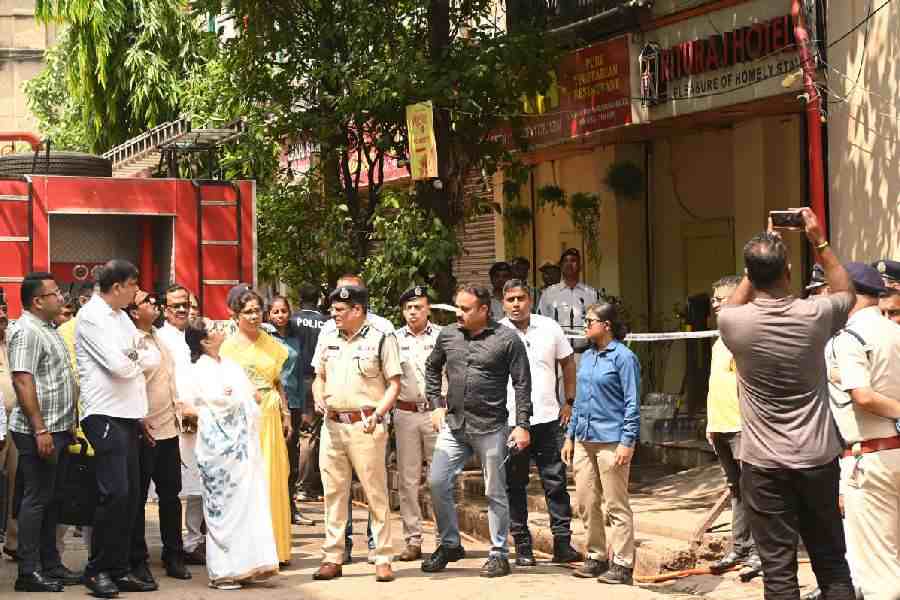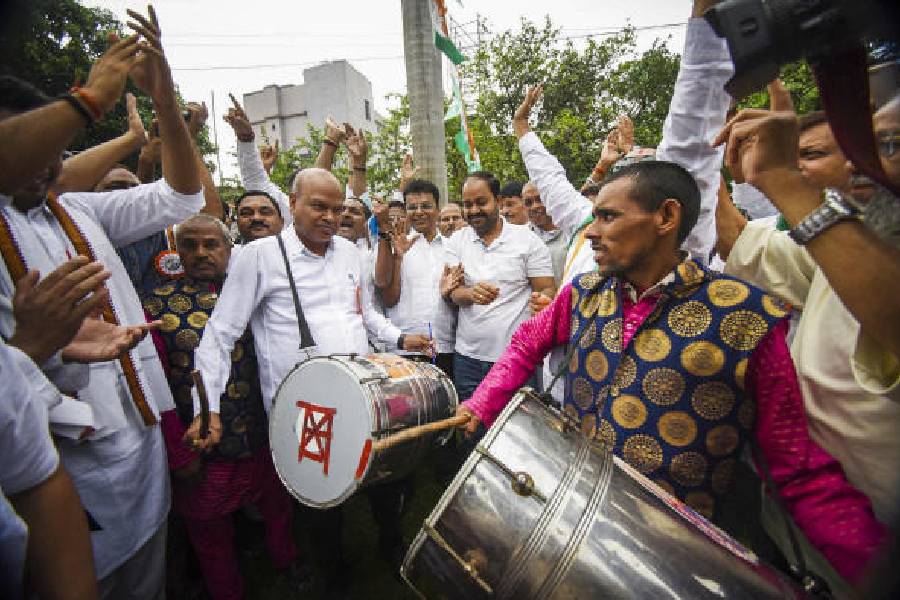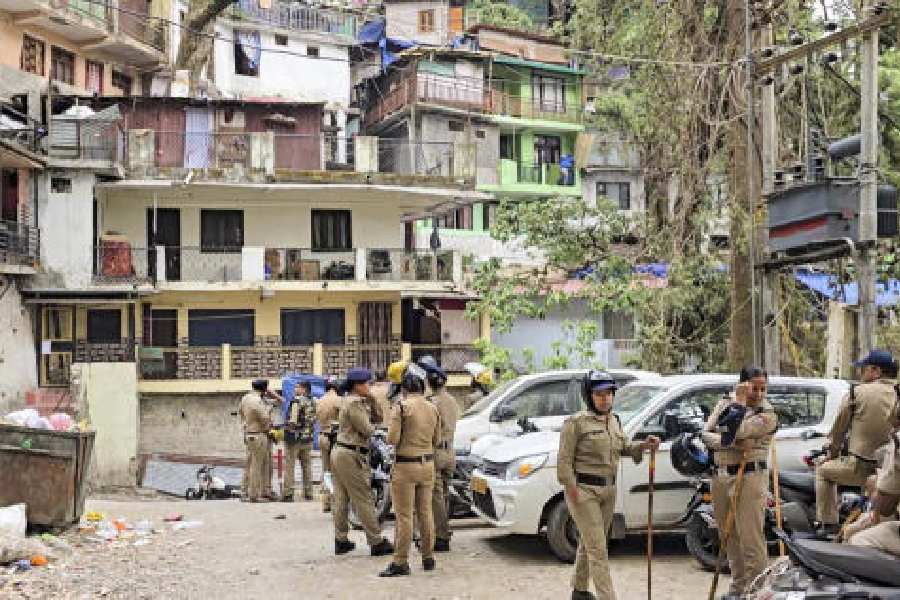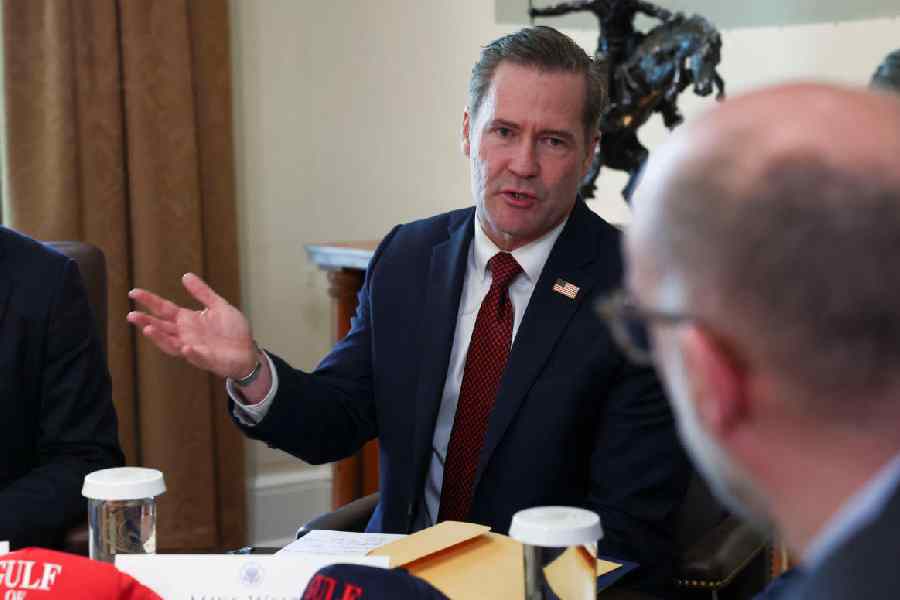
Folklorist and author of many books on the Jagannath culture's spread to Bengal, Nepal and the Northeast, Sk Makbul Islam was in Bhubaneswar on Saturday to receive a felicitation. The Dean of Kalyani University in Bengal spoke to Namita Panda of The Telegraph on his experiences during his research on the Jagannath culture
How is the feeling of receiving an award for Nabakalebar from the hands of Puri seer Shankaracharya and Gajapati Dibya Singh Deb?
This is an exclusive feeling. I had never imagined that the revered Shankaracharya and Gajapati would confer such an honour on me. This is the biggest, greatest and rarest recognition I could have earned for my research. I have received many academic awards and felicitations for my work, but this will remain a special moment in my life.
You have travelled extensively for your research on Jagannath for over 20 years. Please share some anecdotes.
I started my research in 1993. In these 22 years, I have travelled across almost all the districts of Bengal, throughout Nepal and Bangladesh. In Nepal's Bhaktapur, a 700-year-old Chaar Dhaam exists that has temples of all four major Hindu pilgrimages. Here, a Jagannath temple is also present and since mostly Nepalis are Shaivites, they worship Lord Jagannath in the form of Bhairav. In Bangladesh's Pabna, a Nilamadhab temple was established about 100 years after the Puri Jagannath temple. The deity is a beautiful idol of Nilamadhab there. Another interesting tale is of Lalan Fakir, a Muslim devotee from Bengal who had visited Puri in 1881 with 41 other devotees, many of who were Muslims. He had written a beautiful Bangla song dedicated to Lord Jagannath that is even now sung in Bangladesh. Two Muslim girls sang it for me on one of my visits. Another interesting fact I came to know is that the Nilachal King and the Nepal King had good relations strengthened by matrimony of the two royal family members. The Nepal King had sent one lakh salgram shilas for the throne of deities' ratnabedi . Hence only the chief servitor of the deities, the Puri King and the Nepal King are allowed to climb the ratnabedi.
Has hailing from a different religion ever posed a problem in your research on Jagannath?
Not at all. First of all my guru, Odia scholar Surendranath Dash, who treats me like his son, inspired me to take up the research on the Jagannath culture's propagation. Every time I visited Puri, servitors, mutt priests and revered saints, all of them blessed me. I had met the Gajapati twice and he encouraged me to get my books on my research translated into Odia. For me, the Jagannath culture is like intoxication, and I can't stop getting deeper into it since I am so attracted to Lord Jagannath.
How would you describe Jagannath culture in ancient times and now?
Being a folklorist and having studied cultural anthropology so deeply, I can easily say that Lord Jagannath is the God of cultural integrity. He is worshipped as Shiva, Buddha, Vishnu, Durga, Ganesha in different places. He is the epitome of all schools and orders of Sanatana dharma. Lord Jagannath is very unique and the only symbol of cultural integrity. In every festival and occasion the Lord doesn't do anything alone but always with his brother and sister. This symbolises brotherhood, which is essential for the entire world today. This has remained constant over the centuries in the Jagannath culture. There have been few changes in rituals or patterns, but the essence is intact for which all people associated with the temple must be acknowledged. Mismanagement exists everywhere in the world, in all major religious sites. We should not lose faith in the keepers of the tradition and know that all happens with the will of Lord Jagannath.
How do you want your research on Jagannath culture be used?
I would like my books to help readers to strengthen faith and respect in the Lord. My research will continue till my last breath. I have great regard for the rules of the temple and would never challenge them. But as a devotee, it is my hope that one day the Lord will allow all His devotees to see Him in the sanctum, of course, with necessary restrictions.










